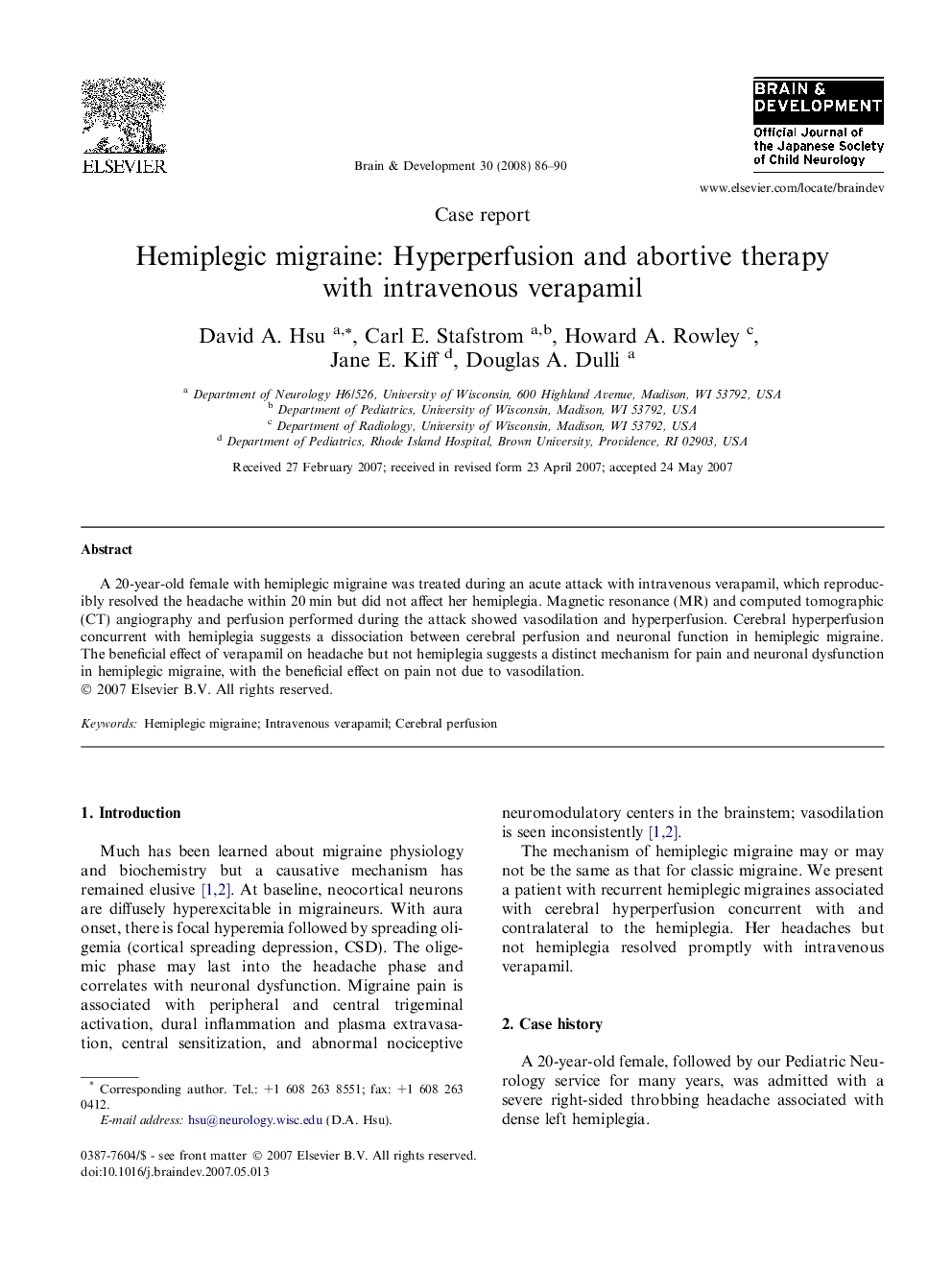| Article ID | Journal | Published Year | Pages | File Type |
|---|---|---|---|---|
| 3038483 | Brain and Development | 2008 | 5 Pages |
Abstract
A 20-year-old female with hemiplegic migraine was treated during an acute attack with intravenous verapamil, which reproducibly resolved the headache within 20 min but did not affect her hemiplegia. Magnetic resonance (MR) and computed tomographic (CT) angiography and perfusion performed during the attack showed vasodilation and hyperperfusion. Cerebral hyperperfusion concurrent with hemiplegia suggests a dissociation between cerebral perfusion and neuronal function in hemiplegic migraine. The beneficial effect of verapamil on headache but not hemiplegia suggests a distinct mechanism for pain and neuronal dysfunction in hemiplegic migraine, with the beneficial effect on pain not due to vasodilation.
Related Topics
Life Sciences
Neuroscience
Developmental Neuroscience
Authors
David A. Hsu, Carl E. Stafstrom, Howard A. Rowley, Jane E. Kiff, Douglas A. Dulli,
